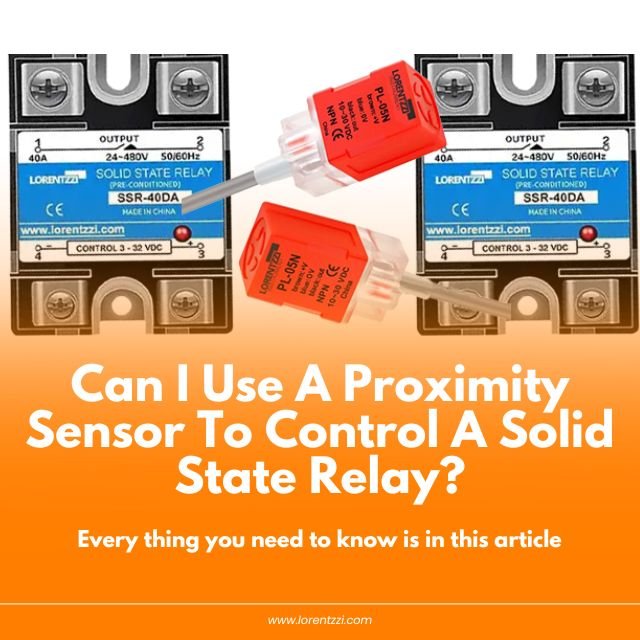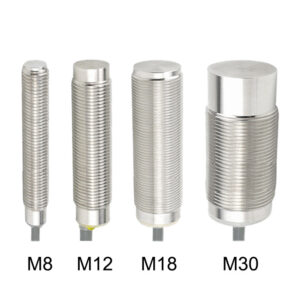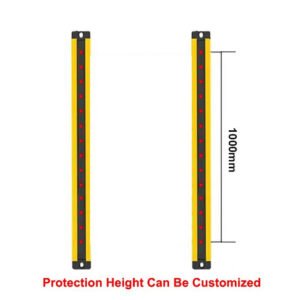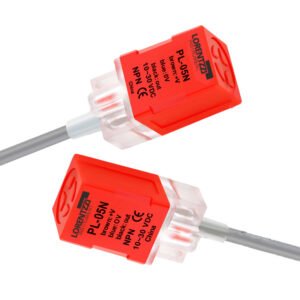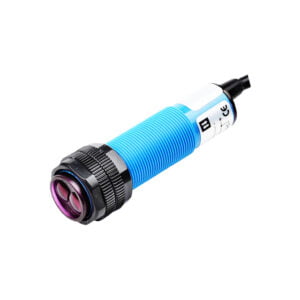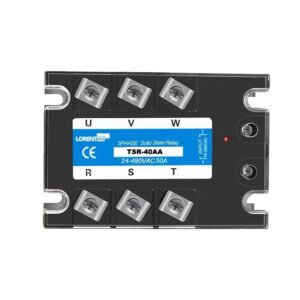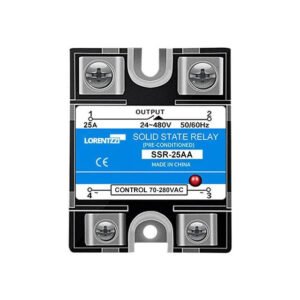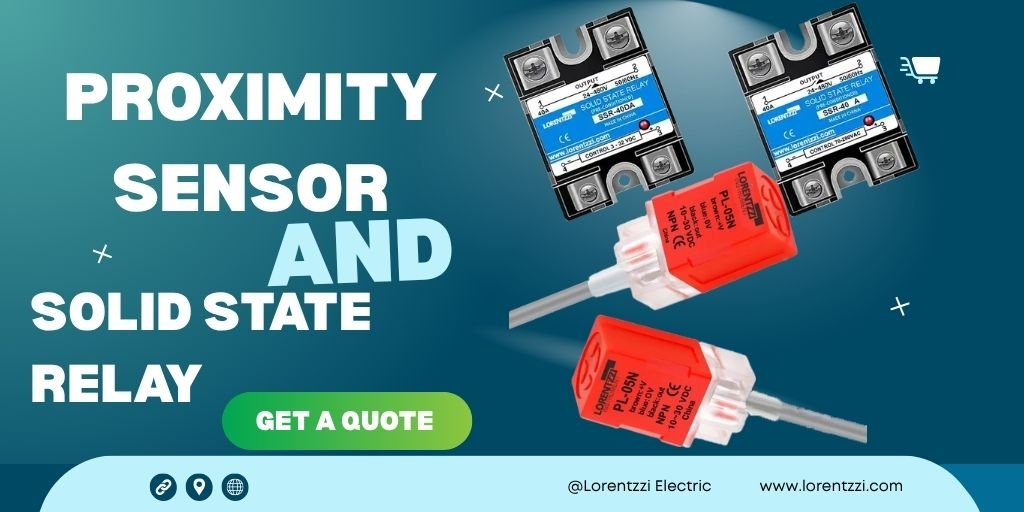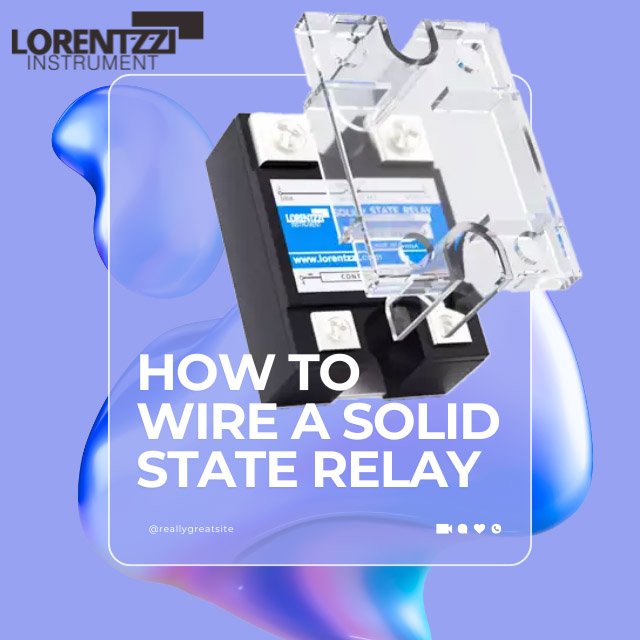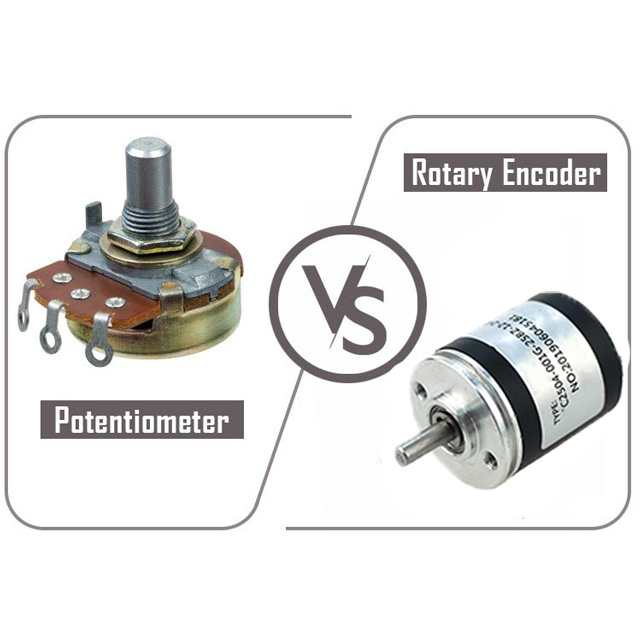I’ve been asked this question a lot lately: Can proximity sensors be used with solid-state relays?
The answer is yes, but you might be wondering why.
In this article, we’ll explain.
Now, let’s get started!
What are the proximity sensor outputs?
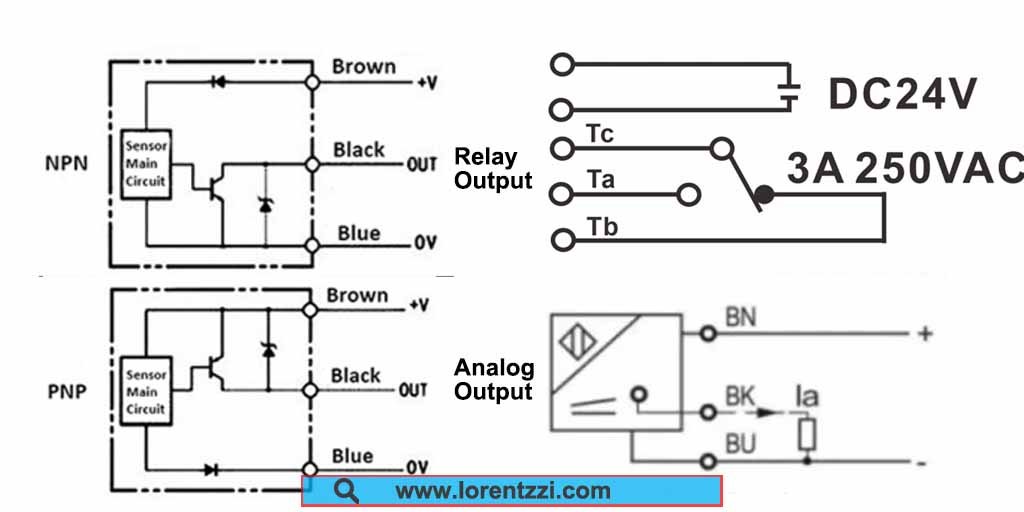
Within the Lorentzzi® product category, proximity sensors can be categorized as inductive, capacitive, photoelectric proximity sensors, and safety light curtains.
What output types do they have?
The proximity sensor output can be a wet contact such as a transistor PNP sourcing, NPN sinking, a dry contact relay output or analog output.
The next section will describe these in more detail.
PNP sourcing output:
PNP sourcing output sensor is used to control the positive pole of the load.
So, when the sensor detects an object, this output supplies the positive supply voltage (for example, +24 V) to the load.
The output current is about 200 mA.
To complete the circuit, connect the positive pole of load to the sensor output and the 0 V (negative) to another terminal.
NPN sinking output:
NPN sinking output sensor is used to control the load’s negative polarity.
So, when activated, the sensor pulls its output to 0 V (ground), sinking current from the load.
To complete the circuit, we should connect the negative terminal of the load to the sensor and the positive terminal to the other terminal.
Relay output:
The sensor’s relay output is a voltage-free (dry) contact – essentially a switch.
It does not provide power; it is used only to open or close a circuit.
To control a load, connect an external power source in series with the relay contacts and the load.
Thus, these contacts can pass both DC and AC currents, with a typical contact capacity of 3A at 250VAC and 3A at 24VDC.
Analog output:
Proximity sensors also offer analog outputs, providing 4-20 mA, 0-5 VDC, or 0-10 VDC output signals.
The output current and voltage increase or decrease with increasing detection distance (contact us if you require a custom output).
Below are examples of our analog output inductive and capacitive proximity sensors:
What are the solid state relay inputs?
The solid state relay input can be one of DC3-32V, AC70-280V, analog 0-5VDC, 0-10V, 4-20 mA, or potentiometer.
DC3-32V input SSR:
For the DC3-32V control solid-state relay, its working process is: when 3-32VDC voltage is applied to the control end, the load part closes the circuit and the load is energized.
In order for the solid-state relay to turn on or off the load, the voltage should be in the range of 3-32VDC.
Another important thing is the current.
Generally, the input current of this type of SSR should be at least 5mA.
If the current is too low, the solid-state relay control circuit cannot be started.
AC70-280V input SSR:
AC70-280V input SSR is the same as AC contactor. It uses AC power to control AC load.
Its working process is: when AC voltage in the range of AC70-280VAC is supplied to the control end, the load part circuit is closed, thereby driving the load.
Analog Input SSR:
Compared to the two input solid-state relays (SSRs) mentioned above, analog input SSRs are more accurately described as solid-state voltage regulators.
They accept 4-20 mA, 0-5 VDC, or 0-10 VDC control signals and proportionally adjust the output voltage.
As the analog signal increases, the load voltage also increases, making these devices ideal for lighting dimming, more precise heater temperature control, and similar applications.
Can a proximity sensor control an SSR?
From the above proximity sensor outputs and SSR inputs, we can know:
- If the output is a transistor output, as mentioned above, the output is 6-36VDC 100 mA, which is within the voltage range of the DC control DC or DC control AC solid-state relay, and the solid-state relay can absorb sufficient current. Therefore, if the proximity sensor output is a transistor, it can be controlled for both DC control AC and DC control DC solid-state relays.
- If the proximity sensor output is a relay output, by connecting it to an AC power source we can easily control the AC to AC SSR, and if we can pass a DC power source through the relay, it can also be used to control DC to AC and AC to AC SSRs.
- If the proximity sensor output is an analog 4-20 mA, 0-5VDC, or 0-10VDC output, it can also control an analog input solid-state regulator, such as controlling the speed of a motor, dimming a light, etc.
How to wire a proximity sensor to an SSR?
In the next section, we will provide wiring diagrams for different output proximity sensors with different types of solid-state relays:
PNP proximity sensor with SSR wiring diagram:
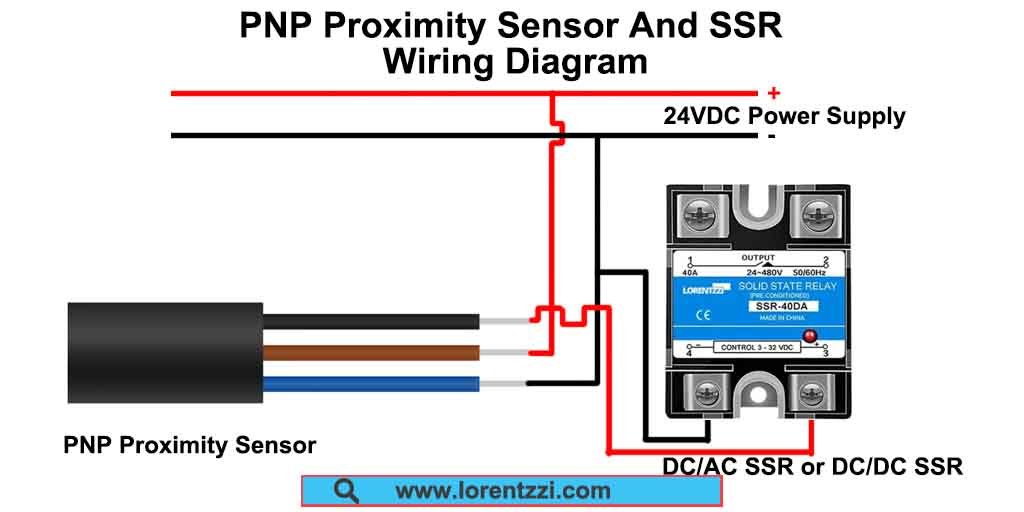
NPN proximity sensor with SSR wiring diagram:
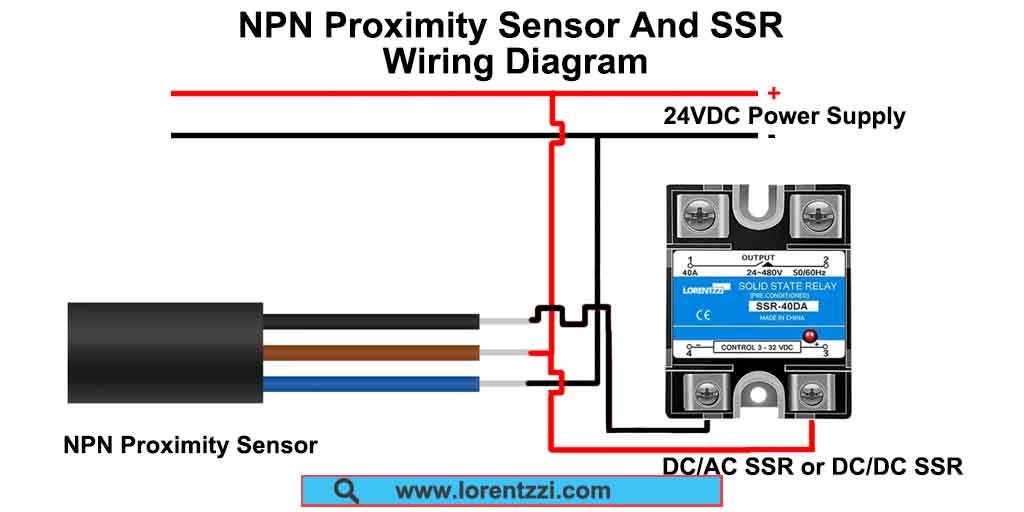
Relay output proximity sensor with SSR wiring diagram:
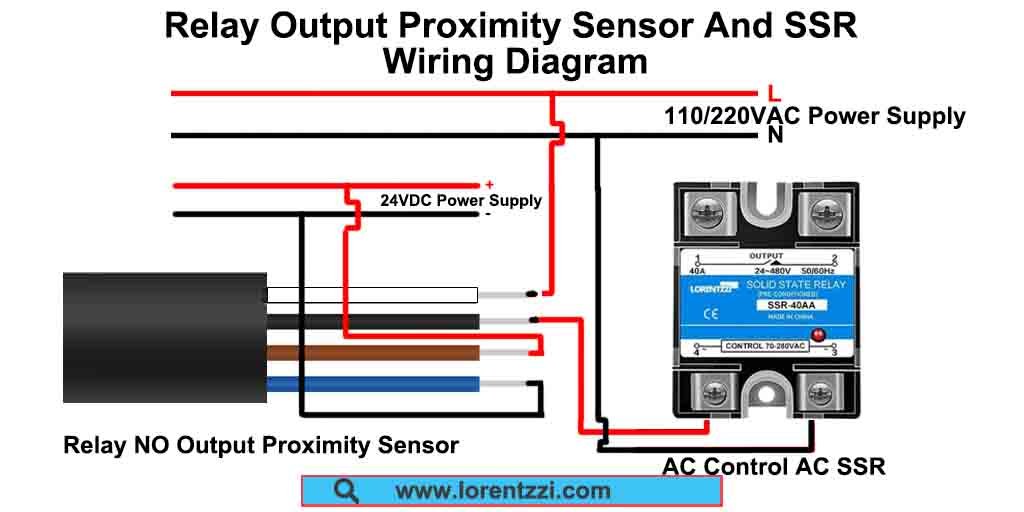
Conclusion
In summary, proximity sensors can be used in conjunction with solid-state relays (SSRs) to achieve start/stop control of high-power loads.
If you still have questions about wiring proximity sensors and solid-state relays, please contact us for professional advice.
As one of China’s leading manufacturers and suppliers of industrial control products, Lorentzzi® not only provides high-quality products but also offers solutions tailored to your needs.

